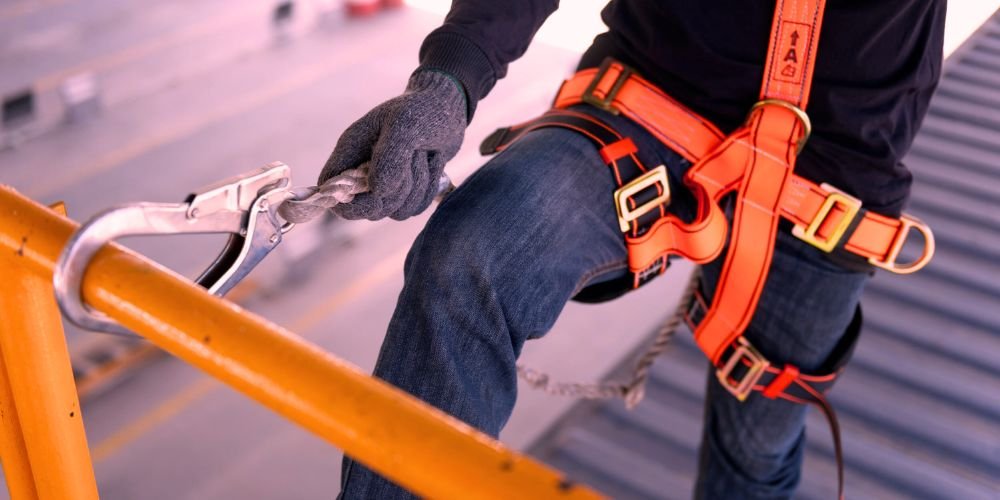Fall detection systems have emerged as crucial tools in health monitoring, especially for older people and individuals with mobility issues. This comprehensive exploration delves into the principles, key components, benefits, challenges, and future trends of fall detection systems, highlighting their significant role in promoting safety and well-being.
Understanding Fall Detection Systems
Fall detection systems are designed to automatically detect and respond to falls, providing timely assistance and improving safety for at-risk individuals. These systems leverage various technologies to monitor movements and identify falls accurately.
What is a Fall Detection System?
A fall detection system is an assistive technology that uses sensors to monitor an individual’s movements and identify falls. The system can alert caregivers or emergency services when a fall is detected, ensuring prompt intervention. These systems are vital in reducing the risk of prolonged injury or complications due to delayed medical response.
Types of Fall Detection Systems
Several types of fall detection systems exist, including wearable devices, non-wearable systems, and hybrid models. Wearable devices like smartwatches and pendants are equipped with accelerometers and gyroscopes to monitor movements. Non-wearable systems use cameras, floor sensors, or radar technology to detect falls. Hybrid models combine both wearable and non-wearable elements to enhance accuracy and coverage.
History and Evolution of Fall Detection Systems
The concept of fall detection systems has evolved significantly over the years. Early systems relied on simple motion detectors and manual alerts. With technological advancements, modern systems now incorporate sophisticated sensors, machine learning algorithms, and real-time data analysis to improve accuracy and reliability. Integrating AI and IoT has further enhanced the capabilities of these systems, making them more effective and user-friendly.
Key Components of Fall Detection Systems
Effective fall detection systems comprise several critical components that ensure accurate monitoring and timely alerts.
Sensors
Sensors are the core component of fall detection systems. Accelerometers and gyroscopes in wearable devices detect changes in movement and orientation, while non-wearable systems may use cameras, radar, or pressure sensors to monitor the environment. These sensors collect data continuously, allowing the system to identify falls based on specific movement patterns and criteria.
Data Processing Units
Data processing units analyze the data sensors collected to determine if a fall has occurred. Advanced algorithms and machine learning models process this data in real time, distinguishing between normal activities and potential falls. These units are crucial in minimizing false alarms and ensuring accurate detection.
Communication Modules
Communication modules enable the fall detection system to alert caregivers, family members, or emergency services when a fall is detected. These modules use various communication channels, such as SMS, email, or direct calls, to ensure timely and reliable notifications. Some systems also integrate with home automation and security systems for comprehensive safety management.
Benefits of Fall Detection Systems
Fall detection systems offer numerous advantages that enhance safety and improve the quality of life for at-risk individuals.
Increased Safety and Independence
Fall detection systems provide a safety net for individuals at risk of falls, allowing them to live more independently. By ensuring that help is available promptly in case of a fall, these systems reduce the fear of falling and enhance confidence in daily activities.
Prompt Medical Response
One of the most significant benefits of fall detection systems is the ability to ensure prompt medical response. Quick intervention can mitigate the severity of injuries and reduce recovery time, potentially saving lives and improving health outcomes for fall victims.
Peace of Mind for Caregivers
Caregivers and family members benefit from fall detection systems’ peace of mind. Knowing that the system will alert them in case of an emergency allows caregivers to focus on other responsibilities and reduces stress associated with constant monitoring.
Challenges of Fall Detection Systems
Despite their many benefits, fall detection systems face challenges that can impact their effectiveness and adoption.
Accuracy and False Alarms
One of the primary challenges is ensuring the accuracy of fall detection systems. False alarms can be disruptive and lead to alarm fatigue, where caregivers become desensitized to alerts. Conversely, missed detections can result in delayed assistance. Continuous sensor technology and algorithm improvements are necessary to enhance accuracy and reliability.
User Compliance
User compliance is essential for the effectiveness of wearable fall detection systems. Some individuals may find wearable devices uncomfortable or forget to wear them consistently. Ensuring user adherence through comfortable designs and user-friendly interfaces is crucial for maximizing the benefits of these systems.
Privacy Concerns
Non-wearable fall detection systems that use cameras or other monitoring technologies raise privacy concerns. Users may feel uncomfortable with constant surveillance in their homes. Balancing the need for safety with privacy considerations is vital, and transparent communication about data usage and protection can help alleviate these concerns.
Future Trends in Fall Detection Systems
Emerging technologies and innovative approaches, which promise to enhance the capabilities and adoption of fall detection systems, are shaping the future of these systems.
Integration with Smart Home Technologies
Integrating fall detection systems with smart home technologies is a promising trend. Smart home devices like voice assistants and automated lighting can work with fall detection systems to provide a more comprehensive and responsive safety environment. This integration enhances user experience and broadens the scope of safety measures.
Enhanced AI and Machine Learning
Advancements in AI and machine learning will continue to improve the accuracy and functionality of fall detection systems. These technologies can refine movement analysis, reduce false alarms, and enable predictive analytics to identify individuals at higher risk of falls. Enhanced AI capabilities will make fall detection systems more adaptive and reliable.
Wearable Technology Advancements
Wearable technology continuously evolves, with new devices offering better comfort, longer battery life, and more advanced sensors. These advancements will enhance the user experience and improve the adoption rate of wearable fall detection systems. Future wearables may also integrate additional health monitoring features, providing comprehensive health management solutions.
Conclusion
Fall detection systems are vital in enhancing safety and health monitoring, particularly for older people and individuals with mobility issues. By leveraging advanced sensors, data processing units, and communication modules, these systems provide timely alerts and ensure prompt medical response. Despite challenges related to accuracy, user compliance, and privacy, ongoing advancements in AI, wearable technology, and smart home integration promise to improve the effectiveness and adoption of fall detection systems. As technology evolves, fall detection systems will play an increasingly significant role in promoting safety, independence, and peace of mind for at-risk individuals and their caregivers.










